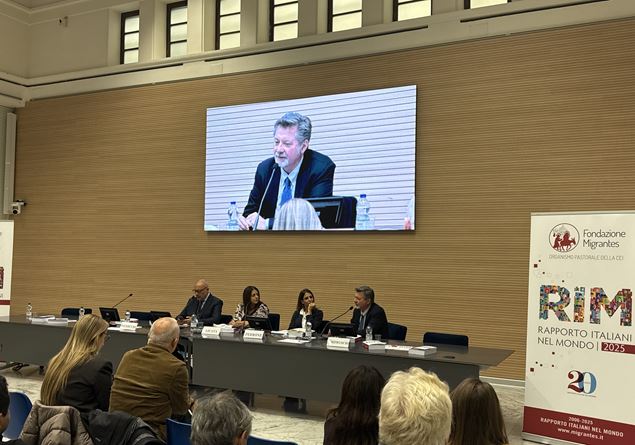Italy like Dorian Gray who, in the mirror of foreign countries, sees his younger face. More and more young people decide to leave Italy and never return. The Italians in the World Report, now in its twentieth edition, recalls that, after the slowdown due to Covid, in the two-year period 2023-2024 there will be exoduses that have never occurred before: 114 thousand expatriations against just 61 thousand repatriations, with a negative balance of 53 thousand people in the first of the two years while in 2024 expatriations increase by 42 thousand units, equal to +36.5%, while returns decrease by 9 thousand (-14.3%). The final result is a migratory balance of -103 thousand individuals, the lowest ever. In 47.9 percent of cases these are people between 18 and 34 years old. Italy struggles to retain young people, skills and entire families to the advantage, above all, of other European countries. The Migrantes Foundation which, thanks to the foresight of its then director, Monsignor Luigi Petris, the idea of the Report, underlines that in 2006, when the volume saw the light for the first time, 560 thousand children were born in Italy, while today the figure has decreased to 340 thousand. Also in 2006, there were 82 thousand Italian expatriates, while, 20 years later, they have doubled. A “national diaspora” which impoverishes our country also because, unlike other European countries where there is circular mobility and, therefore, people also leave to return, it is difficult to return to Italy. «Abroad», underlines the Report, «is seen as an accelerator of skills and professional networks that struggle to find space in Italy. Mobility must be interpreted not as an exception, but as part of a global ecosystem of training and work. In 2024, 73.7% of new Italian emigrants headed towards other European countries», but, precisely, while other young Europeans eventually return to their places of origin, «the circularity that characterizes intra-European mobility does not concern Italy». An imbalance that «fuels the demographic and social impoverishment of the territories, especially in the South and in the internal areas already affected by structural deficiencies. For experts, the answer cannot be an emergency one: we need to regenerate the territories, enhance the experiments already underway and reduce inequalities that discourage taking root.”
This negative balance between Italians who leave and do not return and demographic decline also includes the growing lack of attractiveness of our country for migrants. Responsibility also for migration policies which, according to monsignor Gian Carlo Perego (in the photo), are increasingly the result of a “legislative squint”. The president of the Episcopal Commission for Migration of the CEI and the Migrantes Foundation, presenting the Italians in the World 2025 Report, reiterated that «this Italy cannot only have the decree law of 28 March 2025, converted into Law no. 74 of 23 May 2025, which introduced changes to the principle of ius sanguinis, limiting automatic citizenship to two generations of descent, with some exceptions. At the same time, a referendum on reducing the duration of citizenship from 10 to 5 years was rejected, also for the 65% of children born in Italy to parents of other nationalities and who attend our schools: a legislative squint that penalizes our country.”
Furthermore MIgrantes invites you to Don’t talk about “brain drain”. Only 31.8% of Italian expatriates in 2024 have a degree. The majority (67.2%) have a medium-low educational qualification. The Report therefore dispels the idea that only highly qualified profiles are leaving: «Continuing to talk only about “brains” hides the richness of the paths and devalues non-academic talents. The phenomenon is reminiscent of the Great Emigration, when Italians were branded as “ignorant” despite contributing to transforming the economy and society around the world. The qualification does not measure the value of a person in the world.”
The Report reconstructs Italian mobility from 2006 to today through analyses, statistics and 22 essays from the five continents.
The cover photo shows a moment of the presentation of the Report. At the table, from right, Roberto Inciocchi (Rai), Delfina Licata (Fondazione MIgrantes), Manuela Perrone (Il Sole 24 Ore), Paolo Lambruschi (Avvenire)


